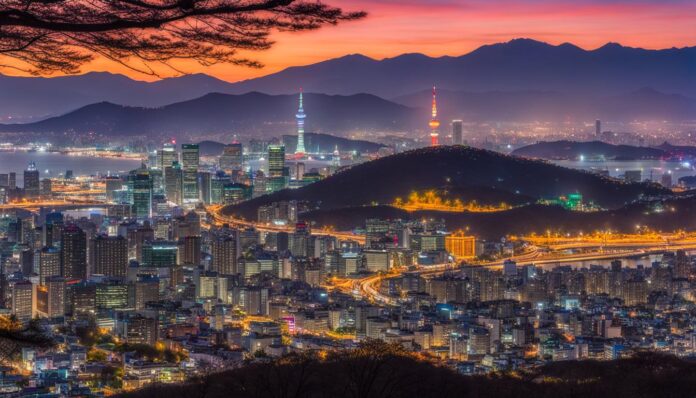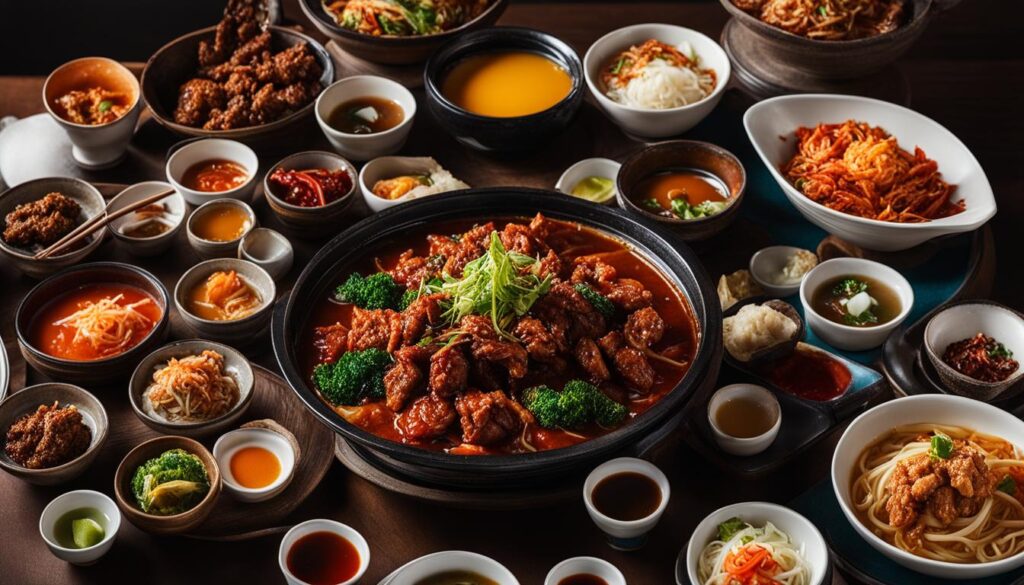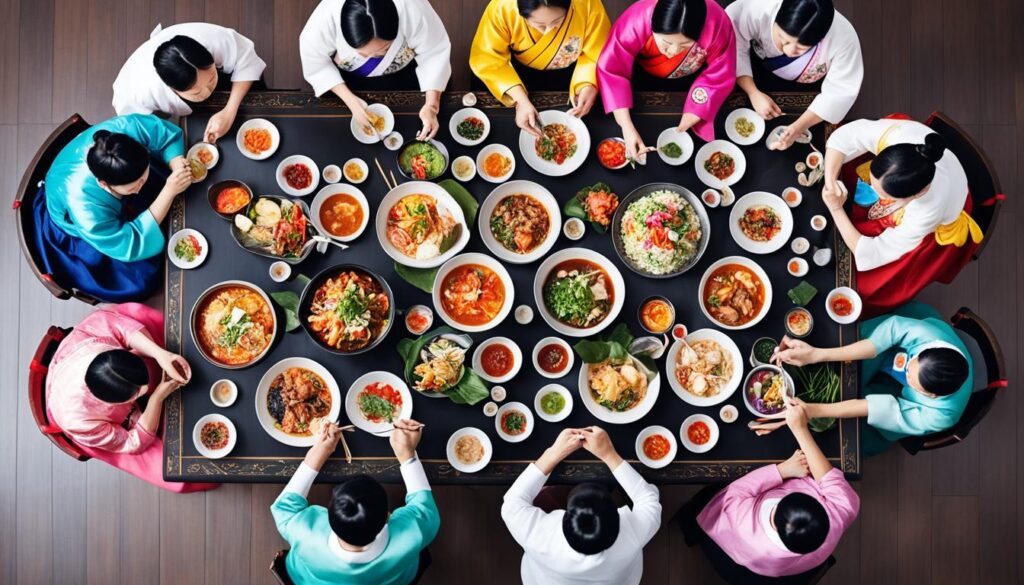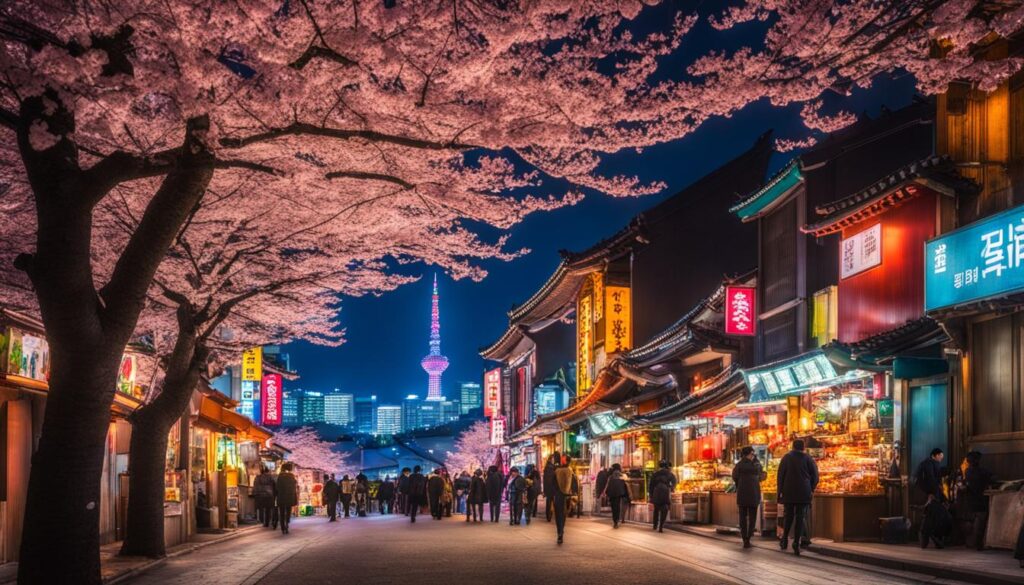Are you interested in learning about the fascinating culture, history, cuisine, and traditions of South Korea? This country, located in East Asia, has much to offer. Whether you’re planning a trip or simply curious, this article will provide you with a comprehensive overview of South Korea. From its booming economy and stunning tourist attractions to its rich history and unique traditions, you’ll discover the diverse and enriching experience that South Korea has to offer.
What are some interesting facts about South Korea? Discover them as we delve into the country’s culture, history, cuisine, traditions, and more. Let’s begin our journey of exploration!
South Korean Culture: A Tapestry of Tradition and Modernity
South Korea’s culture is a beautiful weave of ancient traditions and modern influences, which has evolved into a thriving community with a unique identity. Koreans take pride in their cultural heritage, which permeates several facets of their everyday life.
One of the most visually distinctive is the hanbok, the traditional attire that signifies Korea’s rich heritage. The hanbok comes in vibrant colors and designs that reflect the wearer’s socioeconomic status and purpose, such as weddings, holidays, and formal events.
Another significant component of South Korean culture is its rich history of music and dance. Korea’s traditional music genre is known as Gugak, characterized by its soothing rhythms and enchanting melodies. South Korea is proud to celebrate the Gugak tradition through the annual Gugak Festival, showcasing the best of Korean folk music and dance.
South Korea also has a rich culinary heritage, with dishes that reflect the country’s agricultural roots and unique regional specialties. Kimchi, for instance, is a side dish made from fermented vegetables that are a staple in most Korean meals; it is renowned for its spicy kick and nutritional benefits. Korean barbeque is another must-try dish, where meat is grilled right on the table and served with side dishes, such as rice, vegetables, and sauces.
Korean Traditions in Modern Times
Koreans have a tremendous respect for their ancient traditions and have made efforts to preserve them for future generations. It has been said that tradition in Korea is not a hindrance to progress; instead, it is a bridge that connects the past and present, resulting in a culture that is both traditional and modern at the same time.
One example is the Korean tea ceremony, which is a beautiful demonstration of harmony and grace. It is a solemn event where visitors are served tea while enjoying the calming ambiance of incense and traditional music. This ritual has been passed down from generation to generation as a way to promote harmony and tranquillity in daily life.
“Tradition in Korea is not a hindrance to progress; instead, it is a bridge that connects the past and present, resulting in a culture that is both traditional and modern at the same time.”
South Korea is also famous for celebrating unique cultural events such as Buddha’s Birthday, a colorful festival that celebrates the life of Buddha; Chuseok, a harvest festival that involves spending time with family and sharing traditional food; and Seollal, Korea’s Lunar New Year that emphasizes family and cultural traditions.
South Korean Culture in the Modern World
South Korean culture has been steadily gaining popularity worldwide, with the popularity of K-pop bands, K-dramas, and Korean movies. It is an exciting time for South Korea’s creative industries, which have been attracting a global audience and positively influencing the country’s economy.
The South Korean government actively promotes local cultural industries and enterprises to ensure the continued growth of the sector. It has set up cultural centers worldwide to promote understanding and appreciation of the Korean culture and encourage cultural exchanges with other countries.
All in all, South Korean culture provides a fascinating tapestry of tradition and modernity that continues to flourish and evolve in the modern world.
Rich and Colorful Korean History
The history of Korea dates back centuries, with each dynasty contributing to the country’s cultural heritage and shaping its unique identity. From the Three Kingdoms period to the Joseon Dynasty, the history of Korea is rich with fascinating stories and stunning cultural landmarks that have stood the test of time.
The Goryeo Dynasty, which lasted from 918 to 1392, saw the creation of numerous architectural and artistic masterpieces, such as the Gyeongju Bulguksa temple, which showcases the delicate beauty of traditional Korean architecture. During this period, Korean celadon pottery reached its apex, characterised by intricate shapes and exquisite glazes in shades of blue and green.
Following the Goryeo Dynasty, the Joseon Dynasty was established, lasting from 1392 to 1910. The Joseon Dynasty marked the rapid growth of Korean literature, art, and science, as well as the development of the Korean alphabet, known as Hangul. Many of the iconic landmarks in South Korea, such as Gyeongbokgung Palace and Changdeokgung Palace, were built during this period. Korean traditional music, called “gugak,” also flourished during the Joseon Dynasty, with various forms of traditional instruments and musical performances.
Today, South Korea is proud of its rich cultural heritage and has taken significant steps to preserve and showcase it, with numerous heritage sites recognised as UNESCO World Heritage sites. The Korean history continues to inspire and captivate people worldwide, making it an integral part of the country’s identity.
Savor the Flavors of South Korean Cuisine
South Korean cuisine is a feast for your senses, with bold flavors and diverse dishes that reflect the country’s agricultural heritage and regional specialties. It is a cuisine that is inspired by nature, history, and cultural traditions, resulting in a wide array of mouth-watering dishes that are unique to South Korea.
One of the most iconic South Korean dishes is kimchi, a fermented vegetable dish that is a staple in Korean cuisine. Made with cabbage, radish, or cucumber, and a variety of seasonings, kimchi is a spicy, tangy, and slightly sour dish that is enjoyed with almost every meal.
Bibimbap is another popular South Korean dish that features a bowl of rice topped with vegetables, meat, eggs, and chili paste. It is a colorful and nutritious dish that can be customized to suit individual tastes, making it a favorite among visitors and locals alike.
Other must-try South Korean dishes include bulgogi (grilled marinated beef), galbi (grilled beef or pork ribs), and tteokbokki (spicy rice cakes). These dishes are often enjoyed with small side dishes called banchan, which include a variety of pickled vegetables, seasoned seafood, and tofu.
“South Korean cuisine is renowned for its bold flavors and diverse dishes.”
South Korean Cuisine Table:
| Dish | Ingredients | Description |
|---|---|---|
| Kimchi | Cabbage, radish, or cucumber, chili pepper, fish sauce, garlic, ginger, scallions | A spicy, tangy, and slightly sour dish made with fermented vegetables |
| Bibimbap | Rice, vegetables (spinach, bean sprouts, carrots, zucchini), eggs, beef or pork, chili paste | A rice bowl topped with assorted vegetables, meat, eggs, and chili paste |
| Bulgogi | Sliced beef, soy sauce, sugar, garlic, scallions, sesame oil | Grilled marinated beef, often served with rice and lettuce for wrapping |
| Galbi | Beef or pork ribs, soy sauce, sugar, garlic, scallions, sesame oil | Grilled beef or pork ribs, often served with rice and banchan |
| Tteokbokki | Rice cakes, fish cakes, chili paste, soy sauce, sugar | Spicy rice cakes, often served as a street food snack |
South Korean cuisine is an explosion of flavors that will tantalize your taste buds. Whether you are a foodie or a traveler seeking new gastronomic experiences, South Korea’s cuisine is a must-try.
Embracing Festivities and Traditions
South Koreans take great pride in their centuries-old traditions and colorful festivals that celebrate their cultural heritage. The country is known for its warm and hospitable people who unite to share in these festive occasions.
One of the most popular and much-loved festivals is Buddha’s Birthday, which falls on the eighth day of the fourth lunar month. During this time, the streets are adorned with beautiful lanterns that brighten up the city, and people come together to create a sea of lights. Visitors can feel the buzz in the air as they stroll down the streets and take in the sights and smells of the delicious street food.
Another significant festival is Seollal, which marks the Korean Lunar New Year and is celebrated in late January or early February. This is a time for families to reunite, pay respects to ancestors, and share traditional foods like tteokguk, a rice cake soup. The younger generation bows to their elders and receives blessings in return, a custom known as Sebae.
The South Korean government has designated many of these festivals as National Intangible Cultural Properties, recognizing their significance in preserving the country’s heritage.
Traditional Customs and Practices
South Korea has a rich history and culture that inspire a variety of customs and practices passed down from generation to generation. One such custom is the Korean tea ceremony, also known as Darye, which involves the preparation and serving of green tea. It is a way of showing respect and hospitality to guests and is often seen in ceremonies and social events.
Another traditional practice is Ami, a Korean geomancy that uses the orientation of the building or structure to determine the auspicious direction. They believe that this practice helps bring good fortune and prosperity to the household.
Korean Folklore
South Korean culture has its distinct folklore comprising myths, legends, and stories handed down through oral tradition. These stories have been adapted into various art forms like music, dance, and theater.
One such folktale is the story of the Rabbit and the Moon. It tells of a kind rabbit who encounters three brothers and helps them with a request. As a reward, the brothers give the rabbit a mortar and pestle and tell him to pound rice with it to make a magical potion. The rabbit diligently pounds the rice until he achieves the desired result and ascends to the moon, where he still stands to this day.
Korean Clothing and Accessories
Korean clothing has a long and rich history, with traditional clothing like hanbok still worn for special occasions. The hanbok consists of a blouse, skirt, and additional layers that add to its sophisticated look.
Korean accessories like hairpins and earrings also have their place in Korean tradition. The hairpin, called binyeo, is often adorned with elaborate designs that mark status and represent the beauty and elegance of Korean women.
Popular Korean Festivals and Traditions
| Festival/Tradition | Date |
|---|---|
| Buddha’s Birthday | Eight day of the fourth lunar month |
| Seollal | Late January or early February |
| Chuseok | 15th day of the eighth lunar month |
| Gimbap Day | 22nd day of the fourth lunar month |
| Traditional Korean Wedding | Throughout the year |
Unforgettable South Korea Tourist Attractions
If you’re planning a trip to South Korea, get ready to embark on an adventure of a lifetime. From breathtaking natural wonders to fascinating historical landmarks, South Korea has something for everyone.
One of the most popular tourist destinations in South Korea is Jeju Island, renowned for its stunning landscapes and crystal-clear waters. The island is home to natural wonders such as the majestic Hallasan Mountain, the Cheonjiyeon Waterfall, and the beautiful Manjanggul Cave.
Another must-see for travelers is Seoul, the vibrant and bustling capital city of South Korea. From the iconic Namsan Tower to the ancient Gyeongbokgung Palace, Seoul is steeped in culture and history. The city also offers a plethora of shopping and entertainment options, ensuring you’ll never run out of things to do.
For those interested in history, the ancient city of Gyeongju is a must-visit. Once the capital of the Silla Dynasty, Gyeongju is home to numerous UNESCO World Heritage Sites, such as the Bulguksa Temple and the Seokguram Grotto.
No matter where you go in South Korea, you’re sure to be captivated by its culture, history, and natural beauty. Don’t miss out on the chance to explore this amazing country and all it has to offer!
The Rise of South Korea’s Economic Powerhouse
South Korea has positioned itself as a leading player in the global economy, and its impressive growth trajectory has drawn the attention of investors across the world. The country’s GDP has soared, making it the fourth-largest economy in the world in 2020. South Korea’s success can be attributed to its investment in technological innovation, particularly in the electronics and automotive industries.
The country’s economy is dominated by conglomerates such as Samsung and Hyundai, which are household names worldwide. Samsung, in particular, has played a pivotal role in shaping the South Korean economy, contributing 17% of the country’s $1.6 trillion GDP in 2019. South Korea is also renowned for its advancements in the fields of robotics, artificial intelligence, and semiconductors, with companies such as LG paving the way for future innovation.
“South Korea’s economic success is a unique case study, with the country transforming itself from an impoverished nation to an economic powerhouse in just a few decades.”
The country also has a thriving entertainment industry, with K-pop and Korean dramas gaining global appeal. The Korean Wave, or Hallyu, has taken the world by storm and has catapulted the country’s entertainment industry to new heights, contributing significantly to South Korea’s economy.
In conclusion, South Korea’s dynamic economy has proven to be a global success story, defying odds and charting its path towards prosperity in the global arena.
Fashion and Beauty Trends in South Korea
South Korea has made waves in the world of fashion and beauty with their unique blend of traditional styles and modern trends. The world-renowned Korean beauty industry has become a global phenomenon, and their innovative skincare routines have inspired many. K-beauty, short for Korean beauty trends, emphasizes natural and gentle skincare, using products such as essences, serums, and sheet masks.
Korean Skincare Secrets
Korean beauty puts great emphasis on skincare, as it is believed that healthy skin is the foundation for flawless beauty. Some of the most popular skincare trends include double cleansing, a routine that involves cleansing the skin twice to remove all impurities, and using sunscreen daily to protect the skin from harmful UV rays. Even makeup has skincare benefits, with cushion foundations and BB creams offering hydrating and nourishing effects.
Korean Fashion Influences
South Korea’s fashion scene is known for its innovative and unique styles, which often blend streetwear and high fashion. Korean fashion trends include oversized clothing, colorful jackets, and layering pieces. K-pop idols have also become style icons, with their bold and eye-catching outfits inspiring fans worldwide. From Seoul Fashion Week to shopping districts like Myeong-dong and Hongdae, South Korea has cemented its place in the global fashion industry.
South Korea’s Love for Technology and Gaming
South Korea is at the forefront of technological innovation with a deep appreciation for gaming. The country is home to numerous technology giants such as Samsung, LG, and Hyundai, who have made significant contributions to the world’s technological advancements.
South Korea is also a hub for gaming, with a thriving esports culture that attracts global attention. The country’s passion for gaming can be seen in the popularity of games such as PlayerUnknown Battlegrounds (PUBG), League of Legends, and Overwatch.
The esports industry has seen remarkable growth in South Korea, with major gaming events like the League of Legends World Championship and StarCraft II World Championship Series attracting a massive audience. In 2019, South Korea’s esports industry generated a revenue of 100 billion won (approximately 89 million USD).
South Korean technology and gaming have become a significant part of the country’s culture and identity, influencing global trends and shaping the world’s technological landscape.
A Hub for K-pop and Korean Wave
If you’re even remotely familiar with the world of music, you’ve undoubtedly heard of K-pop. This South Korean music genre has taken the world by storm, with its upbeat melodies, mesmerizing choreography, and colorful music videos. But K-pop is only one facet of what is known as the Korean Wave, or Hallyu in Korean. Hallyu encompasses the global popularity of South Korean pop culture, including music, films, television dramas, fashion, and beauty trends.
K-pop has an enormous following worldwide, with fans known as “K-poppers.” Groups like BTS, Blackpink, Exo, and Twice have captured the hearts of millions with their infectious tunes and charismatic personalities, achieving unprecedented success on the international stage. Their music often features a combination of Korean and English lyrics, making it accessible and relatable for a broader audience.
Not only has K-pop garnered massive popularity, but it has also had a significant economic impact on South Korea’s entertainment industry. In 2020, the K-pop industry was valued at over $5 billion, with exports generating over $1 billion. K-pop has become a cultural export for South Korea, showcasing the country’s entertainment prowess and boosting tourism.
K-pop Beyond Music
K-pop has also transcended the music world, paving the way for South Korean fashion and beauty trends. Korean beauty products, including sheet masks and essences, have become all the rage, and K-beauty routines have gained a cult following. The South Korean fashion scene blends contemporary streetwear with traditional elements, creating a distinctive style that has become a global trend.
“K-pop has become a cultural export for South Korea, showcasing the country’s entertainment prowess and boosting tourism.”
Korean Wave Goes Global
The Korean Wave has made a significant impact globally, with fans tuning in to Korean dramas, films, and variety shows. The success of the Korean entertainment industry has propelled the country onto the international stage, with the Korean Wave serving as a vehicle for cultural diplomacy and soft power.
| K-pop Contributions to the Korean Wave | Impact on South Korean Economy |
|---|---|
| K-pop music and dance | Exports generating over $1 billion |
| K-pop merchandising | Tourism boosted by K-pop fan culture |
| Korean beauty trends | South Korea recognized as a global entertainment hub |
| Korean fashion trends | South Korean companies expanding globally |
The Korean Wave has shown no signs of slowing down, with South Korean entertainment companies increasingly investing in international markets to capitalize on the global demand for Korean pop culture. The Korean Wave has not only created a new cultural phenomenon but has also become a driving force behind South Korea’s economy and tourism industry.
Discovering South Korea’s Natural Beauty
South Korea is a country that boasts a diverse range of natural landscapes. From peaceful mountains to stunning coastlines, there is something for every adventurer to explore.
Among the most breathtaking natural attractions are South Korea’s national parks. Seoraksan National Park is home to the highest peak in the Taebaek Mountains and a mesmerizing display of fall foliage. Bukhansan National Park, located just outside of the bustling city of Seoul, offers hiking trails with sweeping views of the cityscape and the surrounding natural beauty.
If you’re seeking a coastal escape, look no further than Jeju Island, a volcanic island off the southern coast of South Korea. It is renowned for its pristine beaches, natural wonders, and traditional architecture.
South Korea’s natural beauty is not limited to its national parks and islands. The country also encompasses historic sites like the Haeinsa Temple, nestled in the heart of the Gayasan National Park.
Conclusion
Now that you have explored the intriguing facts about South Korea, you can appreciate its unique blend of ancient traditions and modern culture. From the colorful festivals and delicious cuisine to the breathtaking natural landscapes and booming economy, South Korea has something for everyone to enjoy.
Whether you plan to visit the bustling streets of Seoul, hike in the majestic mountains, or indulge in K-beauty and fashion trends, South Korea promises an unforgettable experience. Its warm and friendly people, rich history, and technological advancements make it an alluring destination for travelers worldwide.
So pack your bags and get ready to immerse yourself in the wonders of South Korea – a country that reflects the beauty and diversity of Asia.

















































